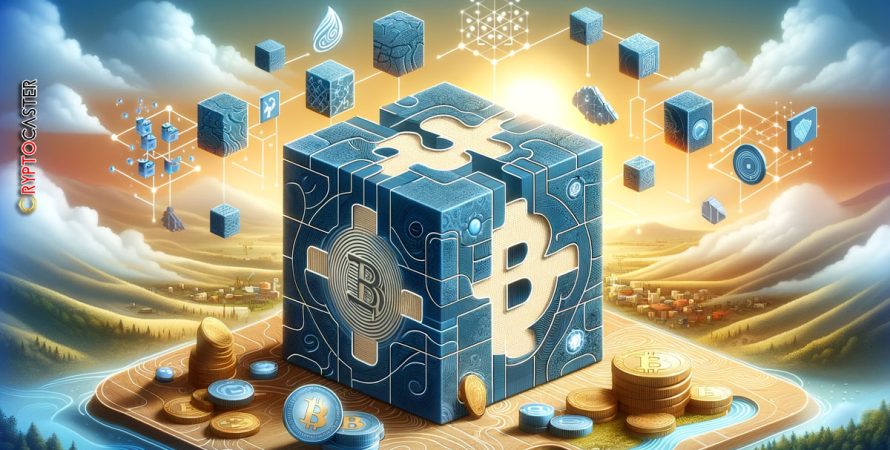A key component of blockchains is block finality, which improves transaction security in distributed cryptocurrency networks.
In an ideal financial system, there should be very little possibility of a transaction being reversed once it has been correctly processed. In conventional finance, this isn’t typically the case, though. Blockchain systems, on the other hand, use block finality to try and lessen this difference.
This tutorial will explain block finality, explain how it functions, and discuss how it affects blockchain networks.
Stay in the know on crypto by frequently visiting Crypto News Today
Block Finality: What Is It?
Block finality in a blockchain network is the irreversibility of a transaction after it has been verified and added to a block. A transaction is considered final at this point and cannot be changed.
This explains why the blockchain is frequently described as being immutable and why transactions that reside there are permanent.
In blockchain consensus protocols, block finality is important but not always instantaneous. In blockchain networks, block finality and latency operate in tandem. This indicates that the latency level of a blockchain—which quantifies the interval between a valid transaction submission and its ultimate confirmation on the chain—strongly influences the finality rate of that blockchain.
How Does Block Finality Function?
Block finality is implemented differently in proof-of-work (PoW) and proof-of-stake (PoS) networks.
Block finality in PoW chains like Bitcoin is achieved using a distributed consensus mechanism that employs the “longest” chain rule. During mining, a miner may broadcast the same block at the same time, creating multiple chains.
At this point, the main chain will have split into several forks, making it difficult to identify the original one. In this case, both forks will continue to validate and add new blocks. However, once one chain validates a block before the other, it becomes the longest chain.
CryptoCaster Quick Check:
The longest chain is then considered to have the most valid blocks attached, while transactions mined on shorter chains are discounted. However, transactions from the rejected chain are most likely included in other blocks on the longer chain, resulting in block finality.
The finality of blocks in proof-of-stake (PoS) chains varies depending on the PoS implementation. For instance, the Ethereum PoS implementation Casper FFG achieves finality by adding validators that verify the chain’s validity every 100 blocks. Once ⅔ of the validators have approved a block, it is finalized.
The Cosmos network’s tendermint protocol reaches finality when a block obtains more than ⅔ of the pre-votes and pre-commits. This will go on forever unless ⅓ of the validators stop responding.
Blockchain Finality Types
The four primary categories of blockchain finality are categorized based on the degree of permanence and certainty. Among them are:
Absolute Finality
The highest degree of finality is absolute finality. There is no way for a transaction in this system to be altered or reversed once it has been broadcast on-chain. Federated consensus is used by blockchain protocols such as Stellar and Ripple to achieve absolute finality. To validate blocks and safeguard the network, the federated consensus depends on reliable validators. Consensus mechanisms are another tool used by blockchain protocols like Cosmos and Algorand to help them achieve absolute finality.
Economic Finality
Economic finality refers to finality achieved through financial incentives. The idea is that in such a blockchain network, reverting transactions becomes prohibitively expensive. Economic finality is closely related to POS networks, which require validators to stake a certain amount of cryptocurrency as collateral. Any malicious action could cost them their financial interest.
Probabilistic Finality
To put it simply, chain-based finality is probabilistic. This represents the likelihood that a transaction will not be reversed even if more blocks are added to the chain. When a transaction is part of a block that has been mined and is part of the longest chain, it achieves probabilistic finality. In most proof-of-work blockchains, such as Bitcoin, probabilistic finality is common.
Instant Finality
A transaction achieves instantaneous confirmation, broadcast to the network, and on-chain irrevocability when it reaches instant finality. Achieving instant finality is challenging and necessitates significant modifications to the consensus and transaction processing mechanisms of blockchains. Nevertheless, decentralized protocols such as Shardeum offer highly certain, nearly instantaneous finality.
The Impact of Finality on Blockchain Network Operations
A fundamental idea underlying blockchain’s dependability and stability is blockchain finality. Finality assures transactional validity and irreversibility, thus preventing the issue of double-spending by recording the valid transaction on-chain. In this sense, the digital asset is deemed used up and cannot be recovered.
Additionally, the implementation of smart contracts requires finality. The terms of the agreement between the parties to a transaction are integrated into the self-executing code of smart contracts. These contracts’ finality guarantees predictable and irreversible results.
Blockchain technology’s fundamental component, block finality, is necessary for cryptocurrency transactions to be successful. Achieving quick and secure finality will be crucial for advancements in blockchain technology.![]()
We hope you appreciated this article. Before you move on, I was hoping you would consider taking the step of supporting CryptoCaster’s journalism.
From Elon Musk, Larry Fink(BlackRock) to Jamie Dimon(JP Morgan Chase) a number of billionaire owners have a powerful hold on so much of the hidden agendas’ which eludes the public concerning the paradigm shift juxtaposed by cryptocurrency and web3 emerging technologies. CryptoCaster is different. We have no billionaire owner or shareholders to consider. Our journalistic efforts are produced to serve the public interest in crypto development and institutional disruptions – not profit motives.
And we avoid the trap that befalls much U.S. and global media – the tendency, born of a desire to please all sides, to engage in false equivalence in the name of neutrality and retail consumer protection. While fairness and transparency dictates everything we do, we know there is a right and a wrong position in the fight against fiat global banking interest and monetary reconstruction precipitated by the emerging crypto ecology.
When we report on issues like the FTX, Binance and Ripple crisis, we’re not afraid to name who or what is uncovered. And as a crypto sentinel, we’re able to provide a fresh, outsider perspective on the global monetary disruption – one so often missing from the insular American and European media bubble.
Around the world, readers can access the CryptoCaster’s paywall-free journalism because of our unique reader-supported model. That’s because of people like you. Our readers keep us independent, beholden to no outside influence and accessible to everyone – whether they can afford to pay for news and information, or not.
We thankyou for the on-going support our readers have bestowed monetarily. If you have not considered supporting CryptoCaster, if you can, please consider supporting us just once from $1 or more of Bitcoin (satoshi) or Eth, and better yet, support us every month with a little more. Scroll further down this page to obtain CryptoCaster’s wallet addresses.
Thank you.
Kristin Steinbeck
Editor, CryptoCaster
Please Read Essential Disclaimer Information Here.
© 2024 Crypto Caster provides information. CryptoCaster.world does not provide investment advice. Do your research before taking a market position on the purchase of cryptocurrency and other asset classes. Past performance of any asset is not indicative of future results. All rights reserved.
Contribute to CryptoCaster℠ Via Metamask or favorite wallet. Send Coin/Token to Addresses Provided Below.
Thank you!
BTC – bc1qgdnd752esyl4jv6nhz3ypuzwa6wav9wuzaeg9g
ETH – 0x7D8D76E60bFF59c5295Aa1b39D651f6735D6413D
MATIC – 0x7D8D76E60bFF59c5295Aa1b39D651f6735D6413D
LITECOIN – ltc1qxsgp5fykl0007hnwgl93zr9vngwd2jxwlddvqt
CRYPTOCASTER HEATMAP






